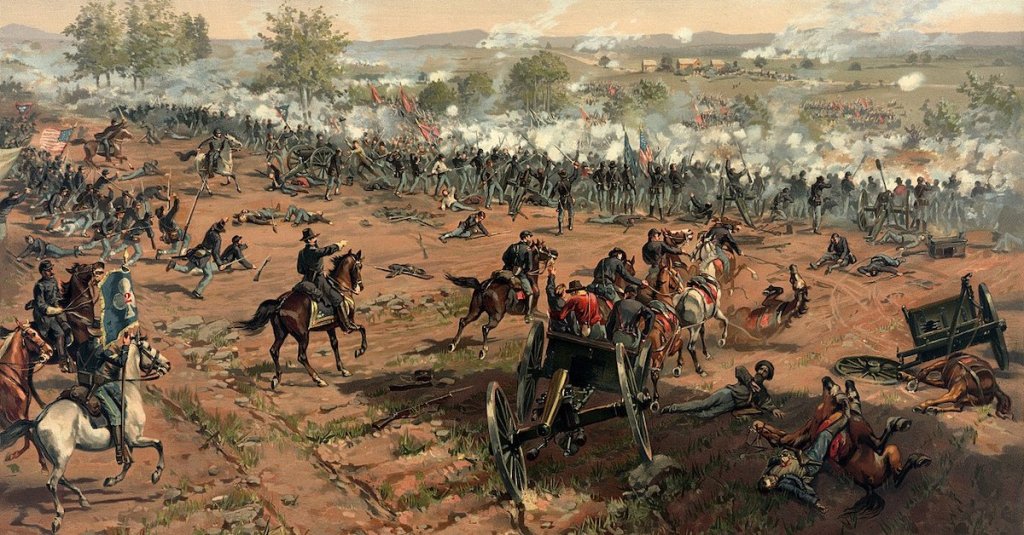

On July 1, 1863, the decisive Battle of Gettysburg began.
Possibly the most important engagement of the Civil War, the Battle of Gettysburg marked the turn of the war against the South. It would also be the bloodiest single battle of the conflict.
Confederate General Robert E. Lee had recently won an overwhelming victory against the Army of the Potomac at Chancellorsville just weeks before and was preparing to invade the North with 75,000 men.

President Abraham Lincoln appointed General George G. Meade to meet Lee, who’d assembled his forces at Gettysburg in Pennsylvania.
The ensuing battle raged for three days with over 50,000 American casualties. It ended in a hard-won victory for the North — one that turned the tide of the war against the South, who would never advance as far North again for the rest of the Civil War.
The Battle of Gettysburg was one of the largest battles in North American history. A portion of the battlefield became a final resting place for Union soldiers as well as the site for President Lincoln’s famous Gettysburg Address, which reasserted the purpose of the Civil War:
“Four score and seven years ago our fathers brought forth on this continent, a new nation, conceived in Liberty, and dedicated to the proposition that all men are created equal.
Now we are engaged in a great civil war, testing whether that nation, or any nation so conceived and so dedicated, can long endure. We are met on a great battle-field of that war. We have come to dedicate a portion of that field, as a final resting place for those who here gave their lives that that nation might live. It is altogether fitting and proper that we should do this.
But, in a larger sense, we can not dedicate — we can not consecrate — we can not hallow — this ground. The brave men, living and dead, who struggled here, have consecrated it, far above our poor power to add or detract. The world will little note, nor long remember what we say here, but it can never forget what they did here. It is for us the living, rather, to be dedicated here to the unfinished work which they who fought here have thus far so nobly advanced. It is rather for us to be here dedicated to the great task remaining before us — that from these honored dead we take increased devotion to that cause for which they gave the last full measure of devotion — that we here highly resolve that these dead shall not have died in vain — that this nation, under God, shall have a new birth of freedom — and that government of the people, by the people, for the people, shall not perish from the earth.”
Featured Image: L. Prang & Co. print of the painting “Hancock at Gettysburg” by Thure de Thulstrup, showing Pickett’s Charge. Restoration by Adam Cuerden. (Library of Congress image)
